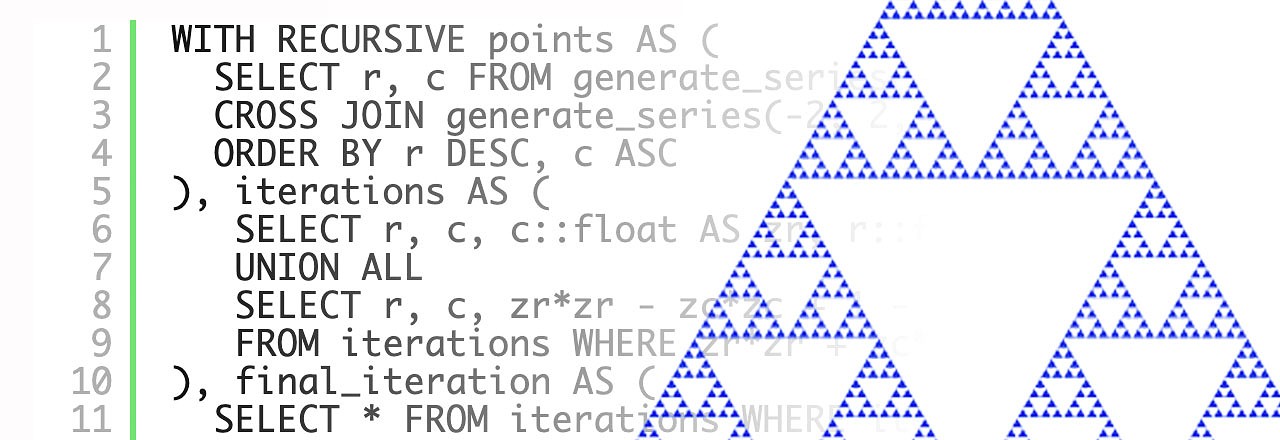#302 — April 24, 2019 |
👋 This issue's Tip of the Week looks at SQL's |
Postgres Weekly |

|
|
Generating Fractals with SQL and Postgres — At !!Con West 2019, Michael gave a talk about creating fractals using SQL and here’s the written version. This is not only a (very detailed) bit of fun, but you’ll learn something about both SQL and Postgres along the way — strongly recommended! Michael Malis |
|
eBook: The Most Important Events to Monitor in Your Postgres Logs — In this pganalyze eBook, we are looking at the Top 6 Postgres log events for monitoring query performance and preventing downtime. pganalyze sponsor |
|
More on Postgres 12's Michael Paquier |
|
How I Use Postgres with Go(lang) — An experienced ‘gopher’ imparts knowledge around the best packages for driver, migrations, queries, and testing. If you happen to be a Go developer yourself, did you know we have a Go newsletter? Johan Brandhorst |
|
▶ How to Fix Up a Corrupted TOAST Table Raghavendra Tadipathri |
|
Coming to PostgreSQL 12: Log All Statements from a Sample of Transactions — A quick look at a new feature coming to Postgres 12 that will let you keep your statement log files under control by only logging a sample of them when you wish to do so. Hubert depesz Lubaczewski |
🛠 Tools and Code |
|
pg_sampletolog: An Extension to Sample Statements or Transactions to Logs — Statement sampling is coming to Postgres 12 (above), but this extension works on Postgres 9.4-11 to let you log a sample of statements or transactions now. Adrien Nayrat |
|
plpgsql_check: A PL/pgSQL Code Checker — This is quite specialized but if you’re looking to find any errors lurking in your PL/pgSQL functions, it could be a lifesaver. The project is quite old but has been kept up to date and runs on modern Postgres versions. Pavel Stehule |
|
The Best Way to Manage Access to Postgres — strongDM works with everything in your stack. Seriously. Any database. Any server. Every environment. See how it works. strongDM sponsor |
|
tail_n_mail: A Log File Watcher Focused On Postgres Logs — A Perl script that automatically detects and emails an admin about ‘interesting’ items found in log files. Docs here. Josh Williams |
|
deno-postgres: A PostgreSQL Driver for Deno — Deno is an interesting, and experimental, JavaScript runtime built by the original creator of Node.js (note that Deno is an anagram of Node!) Bartek Iwańczuk |
|
node-postgres: A Non-Blocking PostgreSQL Client for Node.js — Very popular and has had some releases in the past few weeks. Brian Carlson |
|
pq: The Pure Go Postgres Driver for Blake Mizerany and contributors |
|
|

